IWC Pilot’s Watch Double Chronograph TOP GUN Ceratanium
The iconic split-seconds pilot's chronograph by IWC is back with a new, innovative material, and in standard production.
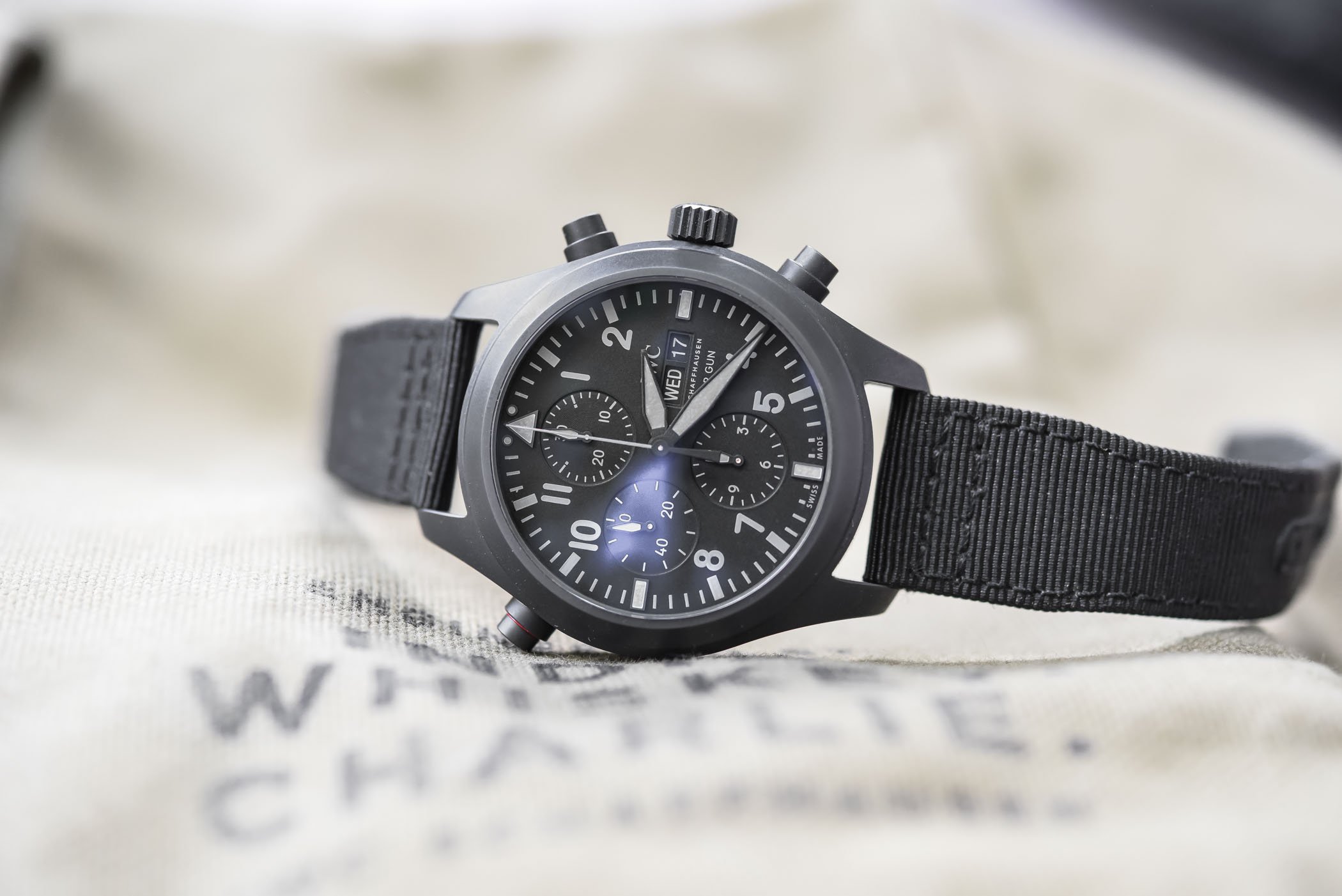
“DoppelChronograph” (or Double Chronograph in English)… If you know your IWC history, you’ll immediately spot the importance – and coolness – of these words. As you might have seen already, 2019 was the year of Pilot’s Watches at IWC Schaffhausen, but not by changing entirely the collection – the classic models remain untouched – but by bringing some new editions in the Spitfire or TOP GUN sub-ranges. This includes the cool Spitfire Chronograph, the return of the UTC or the bold Mojave Desert watch. And best of all, the black-themed Pilot’s DoppelChronograph is back with new materials, and in regular production: meet the IWC Pilot’s Watch Double Chronograph TOP GUN Ceratanium.
Besides being one hell of a good looking pilot’s watch with the coolest complication/movement you’ll probably find at IWC, this new Double Chronograph TOP GUN also marks the comeback of two iconic features of the brand. It has to do with the ceramic pilot’s watch first, and second with the movement that ticks inside.
The Full-Black Pilot’s Chronograph lineage
While the history of pilot’s watches at IWC goes back to the 1930s, the background story for this black DoppelChronograph is closer to us. It goes back to the early-1990s and has to be credited to one of the most important men in the brand’s history; Günter Blümlein (1943-2001) whose influence on the brand was crucial. From 1978 to 2001, Blümlein reintroduced mechanical watchmaking at IWC and created some of the most important watches in the collection, whether classic pieces such as the Portugieser Rattrapante, the Da Vinci, the collaboration with Porsche Design or the first titanium or ceramic watches.
Günter Blümlein was also instrumental in the comeback of the pilot’s watch at IWC, with the launch in the early-1990s of a new collection of tool watches, the so-called Flieger Chronographs. It is well-known that IWC has a long history of pilot’s watches, mainly with WWII B-Uhr (which would later inspire the Big Pilot); however, the commercial comeback of pilot’s watches at IWC was made with modern, instrument-like chronographs.
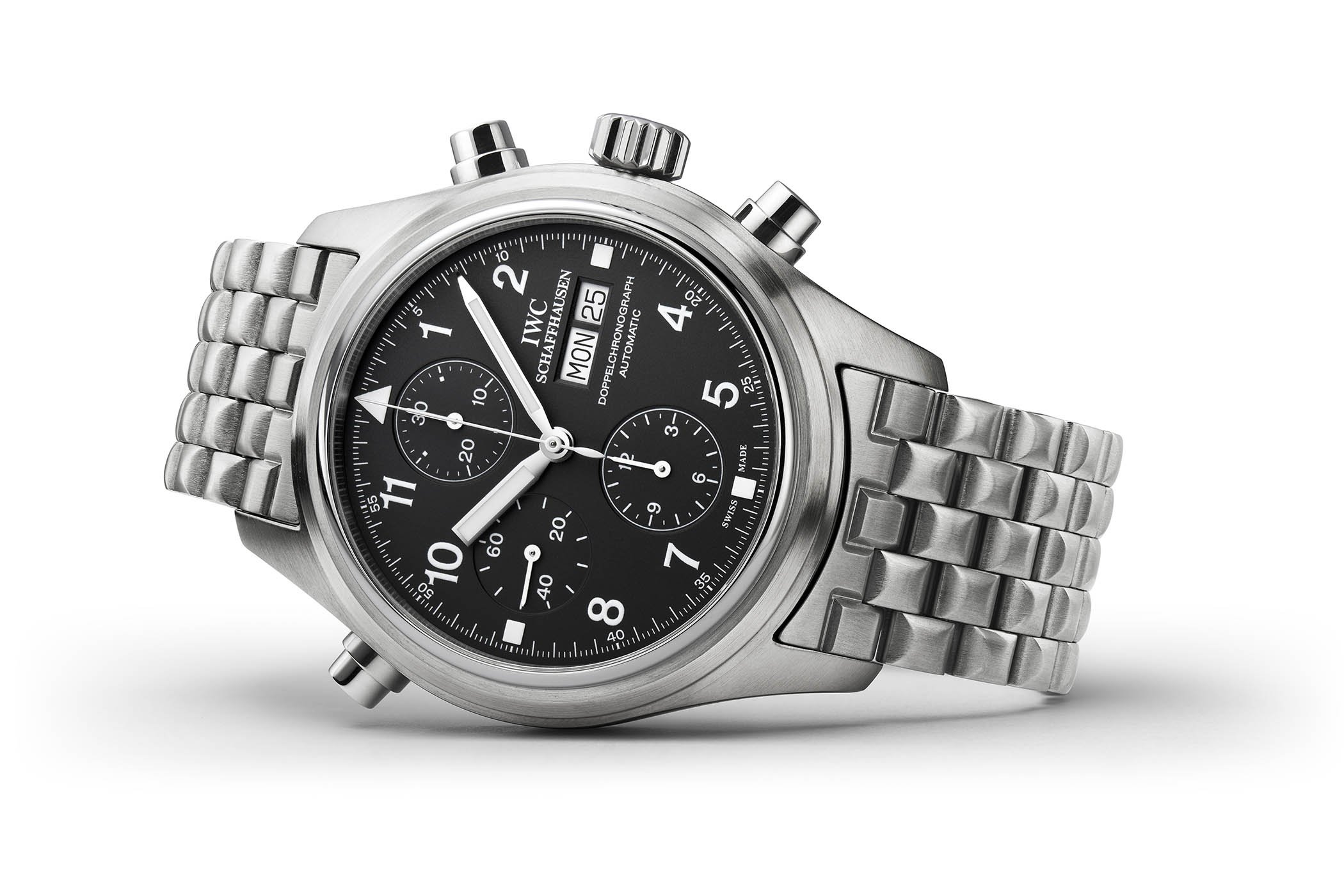
When the Portugieser collection returned on the scene it was endowed with a split-seconds/rattrapante chronograph (with the reference 3712). The same complication was used to relaunch the pilot’s collection which took off with an automatic DoppelChronograph, the reference 3711, a watch that would define the entire collection for the three following decades. This 39mm steel watch had it all: the no-nonsense design, the robustness, the simplicity of the display to enhance legibility and the complex chronograph movement developed in-house with a strong focus on reliability. In short, an icon that would be the mother of all the following IWC pilot’s watches.
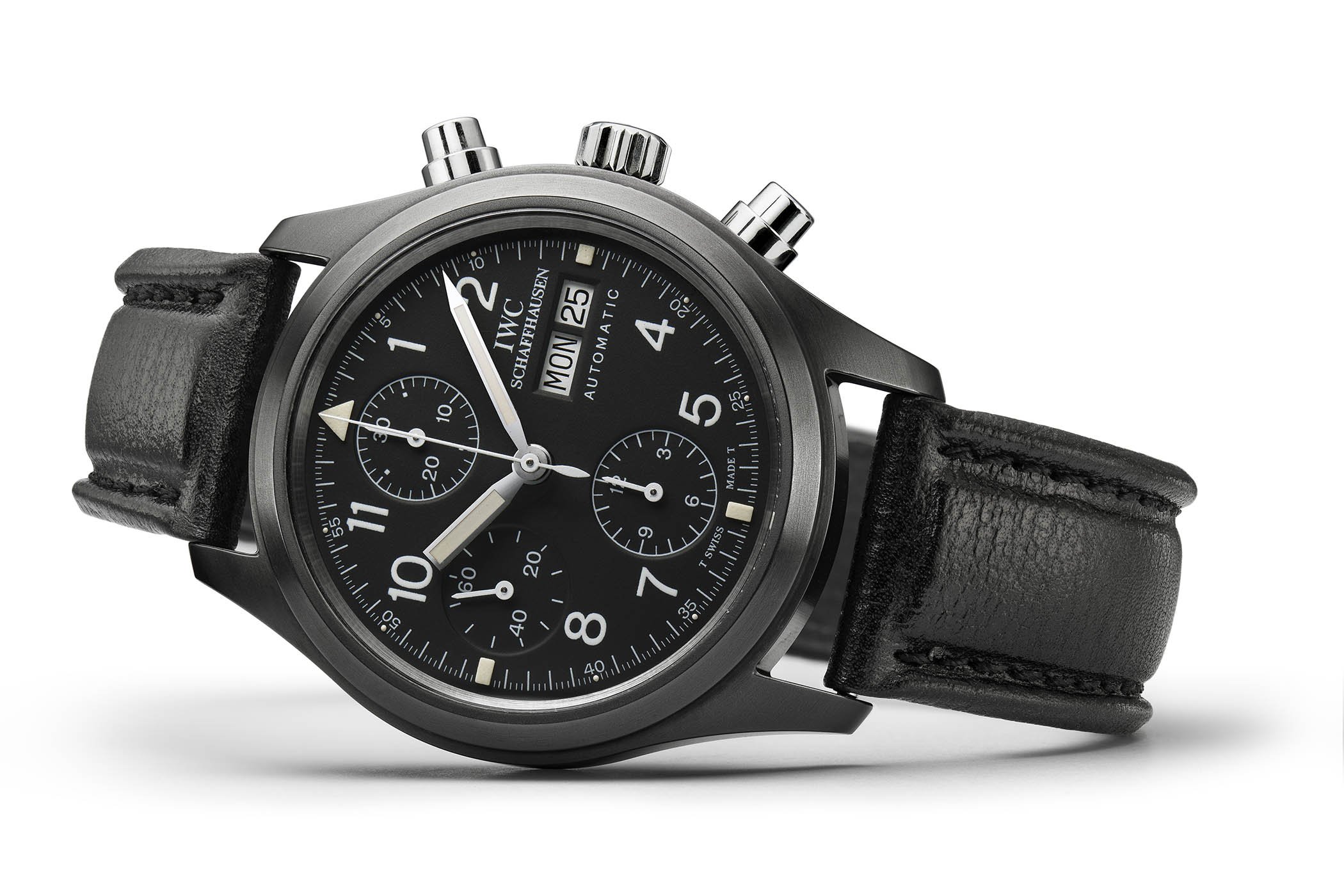
The second watch that we need to mention when looking at the new Double Chronograph TOP GUN Ceratanium is the 1994 Pilot’s Watch Chronograph (or Fliegerchronograph if you want to make it even cooler) reference 3706. This watch, relatively rare and quite valuable, with its black ceramic case, would set the tone for multiple other pilot’s watches, including the watch we are reviewing today.
The Double Chronograph function
One of Günter Blümlein’s main achievements was finding great watchmakers to develop in-house modules to be adapted on top of out-sourced movements. Back in the late-1980s and early-1990s, movements produced entirely in-house were not so common and, as the mechanical watch was just reappearing, the obvious choice was to rely on well-known bases, such as Valjoux or ETA. However, Blümlein wanted more than just a standard chronograph or a simple calendar watch… And that would be the task assigned to Kurt Klaus, who developed IWC’s rather simplified minute repeater and the oversized perpetual calendar, and to Richard Habring, who developed the DoppelChronograph – Double Chronograph – Rattrapante – Split-Seconds (choose you favourite name) function.
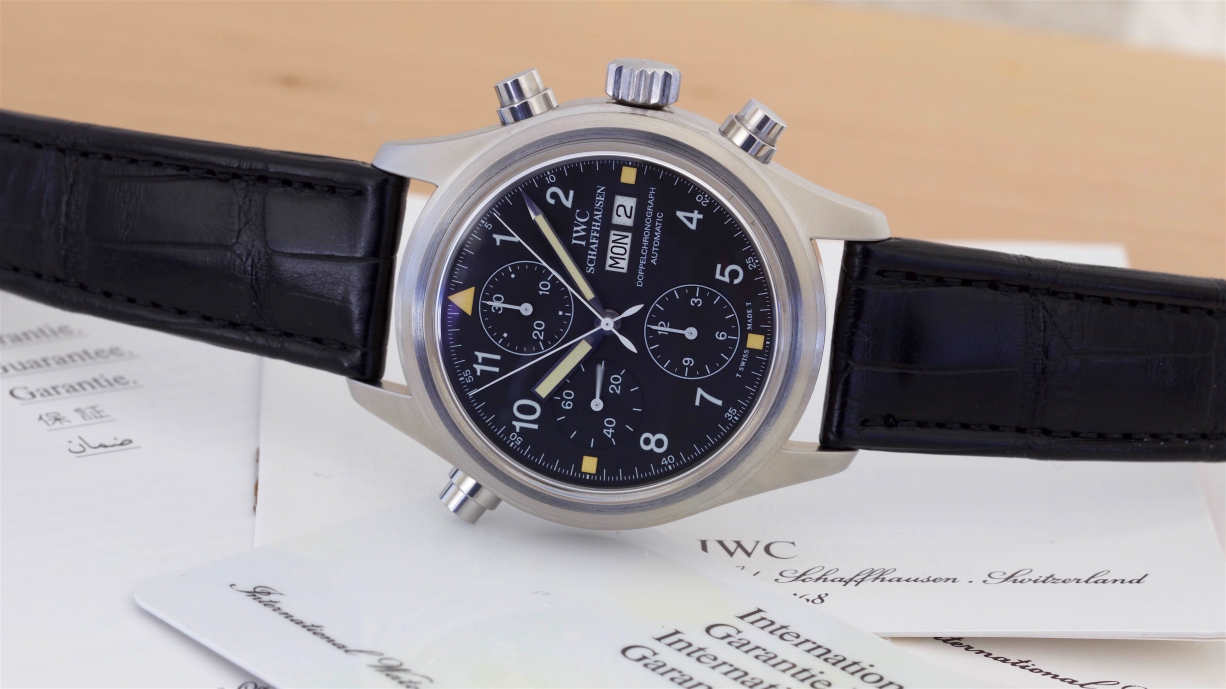
While the split-seconds chronograph function is undoubtedly one of the finest complications in watchmaking, it is complex to develop and fragile on a daily basis. However, these early IWC Flieger watches were meant to be used and abused. They were tool watches meant to serve as instruments, not to spend half of their lives at a service centre. In this instance, and by using the reliable Valjoux 7750 architecture as a base, Richard Habring developed a simplified rattrapante module.

This DoppelChronograph was meant to be simple, for several reasons. First, in terms of industrialisation, so IWC could produce it in-house, without the need for hand-made movements and modules. Then, it was simplified in order to cut costs and to offer a split-seconds chronograph for a reasonable price. Last, it had to be reliable and easy to service – and in watchmaking, the simpler, the better. Habring’s module was available in two versions, one based on a hand-wound movement for the Portugieser 3712, and one automatic version, for the Flieger DoppelChronograph 3711. Since then, Richard Habring left IWC and took his concept to create his own brand, Habring², and his own versions of the Doppel watches.
the new Ceratanium Double Chronograph TOP GUN
As a whole, this new IWC Pilot’s Watch Double Chronograph TOP GUN Ceratanium isn’t exactly new; it is more of an evolution of existing models rather than an unprecedented creation. Still, no debate regarding its coolness since it marks the comeback of the Black DoppelChronograph watch into regular production, and not as yet another limited edition.
This watch is large, full-black and very sporty… But being a black DoppelChronograph, it is also one of IWC’s coolest models!
The main novelty for this reference IW371815 is the material used for the case. Previously, black Flieger watches at IWC were made of ceramic. This material is dear to the Schaffhausen-based brand, which was the first to introduce a wristwatch with a ceramic case back in 1986, with the Da Vinci 3755 and its black zirconium oxide case (more on this topic here). Following this spirit of innovation and the need for black, resistant cases, the brand introduced a new, proprietary material named Ceratanium.
This compound was developed by IWC and combines the advantages of titanium and ceramic in a single material. Based on a titanium alloy, the patented material is as light and rigid as titanium itself but at the same time as hard, wear-free and scratch-resistant as ceramic. Other compelling features are its skin-friendliness, high corrosion-resistance and striking matte black colour. One of the main advantages is that the colour isn’t the result of a coating but is internally black, meaning that there is no risk of seeing some metal if it gets scratched.
Being a watch from the pilot’s collection, legibility and lack of reflections are crucial and, as such, the watch is entirely matte finished. Another improvement compared to the previous version of this watch, the Ceramic Double Chronograph, is that all the parts that compose the case, which includes the pushers, the crown, the caseback and the buckle, are now also made in Ceratanium, resulting in an all-black watch. Older versions often had metallic pushers and crowns – as do the Mojave watch and the classic Ceramic TOP GUN Chronograph IW389101. And while I totally understand this choice from an innovation side, I’m still quite nostalgic about these contrasting pushers… To each his own.
The case of this new Double Chronograph TOP GUN Ceratanium is, as always with IWC Pilot’s Doppel, on the large side. It measures 44mm in diameter and 16.7mm in height – which is due to the automatic movement with an extra split-seconds module and the antimagnetic soft-iron inner case.
From a wearer’s perspective, the IWC Pilot’s Watch Double Chronograph TOP GUN Ceratanium benefits from this new material that results in a watch that is light despite its size, and thus comfortable – as long as you have a relatively large wrist. it does wear smaller than its specifications indicate. Ceratanium is also soft to the skin and not as cold as steel, for instance. The watch has a strong sporty, tool-like feeling and won’t be your best ally with a suit – but all in all, this isn’t its vocation. It is worn on a textile strap, which befits the overall instrument concept.
The dial of this Double Chronograph TOP GUN Ceratanium has also undergone a soft evolution, compared to previous versions. While most ceramic Pilot’s Watches were equipped with black dials and white inscriptions, hands and numerals, with multiple red accents, this new version is more on the monochromatic side. The dial is, as you would expect, matte grained and pitch-black but all printings and luminescent material areas are now grey. Without compromising on the day or night legibility and contrast, it tones down the watch and gives it a stealthier look. The use of red accents is also much more restrained and only visible on the split-seconds pusher – it is just a small detail, but a cool one actually.
The watch features a convex sapphire crystal dial-side with anti-reflective coating and is secured against displacement by drops in air pressure – something necessary on traditional pilot’s watches. One comment though, the anti-reflective coating, as always at IWC, creates blue reflections on the dial, which are not the best for time-reading.
Under the closed Ceratanium caseback with the TOP GUN emblem is the calibre 79420, a movement used by IWC for over 25 years based on Habring’s research. This split-seconds chronograph is based on a Valjoux 7750 architecture, extensively modified with the addition of the rattrapante module, which is done in Schaffhausen. It retains most of the 7750 specifications, including its 44-hour power reserve, its typical wobbly rotor, the day-date function and the cam-operated chronograph function. This movement might not have the noblesse of a Patek split-seconds calibre, but in this context, that’s not what we’re asking for. This movement is not only extremely robust and simple but is also one of the most accessible split-seconds chronograph movements available.
Price and availability
As mentioned earlier, the IWC Pilot’s Watch Double Chronograph TOP GUN Ceratanium (Ref. IW371815) is no longer offered as a limited edition. It is now available at IWC’s boutiques and retailers and priced at EUR 14,700. While this is a substantial amount, it remains relatively reasonable for an automatic rattrapante chronograph in an innovative material. More details at www.iwc.com.

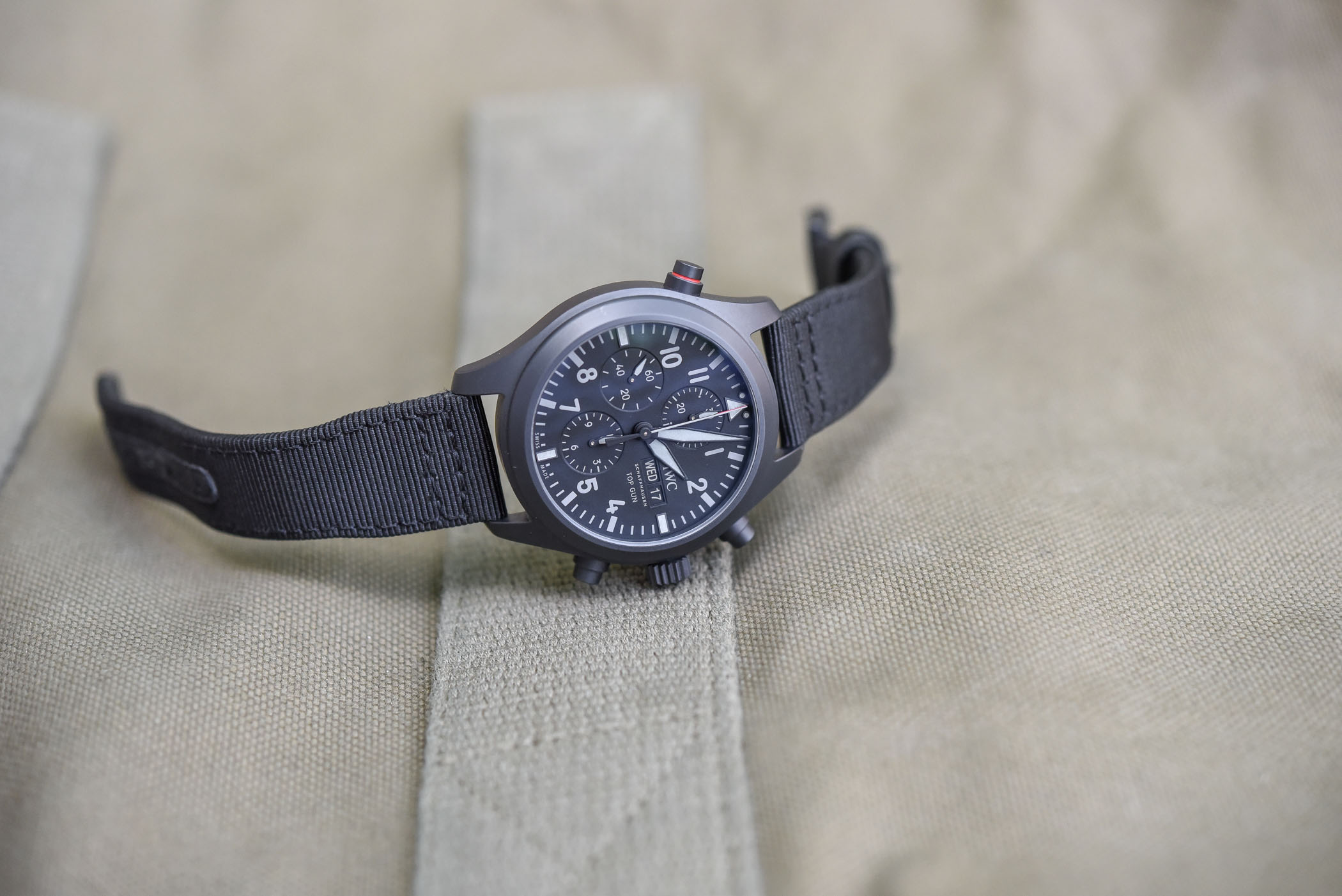
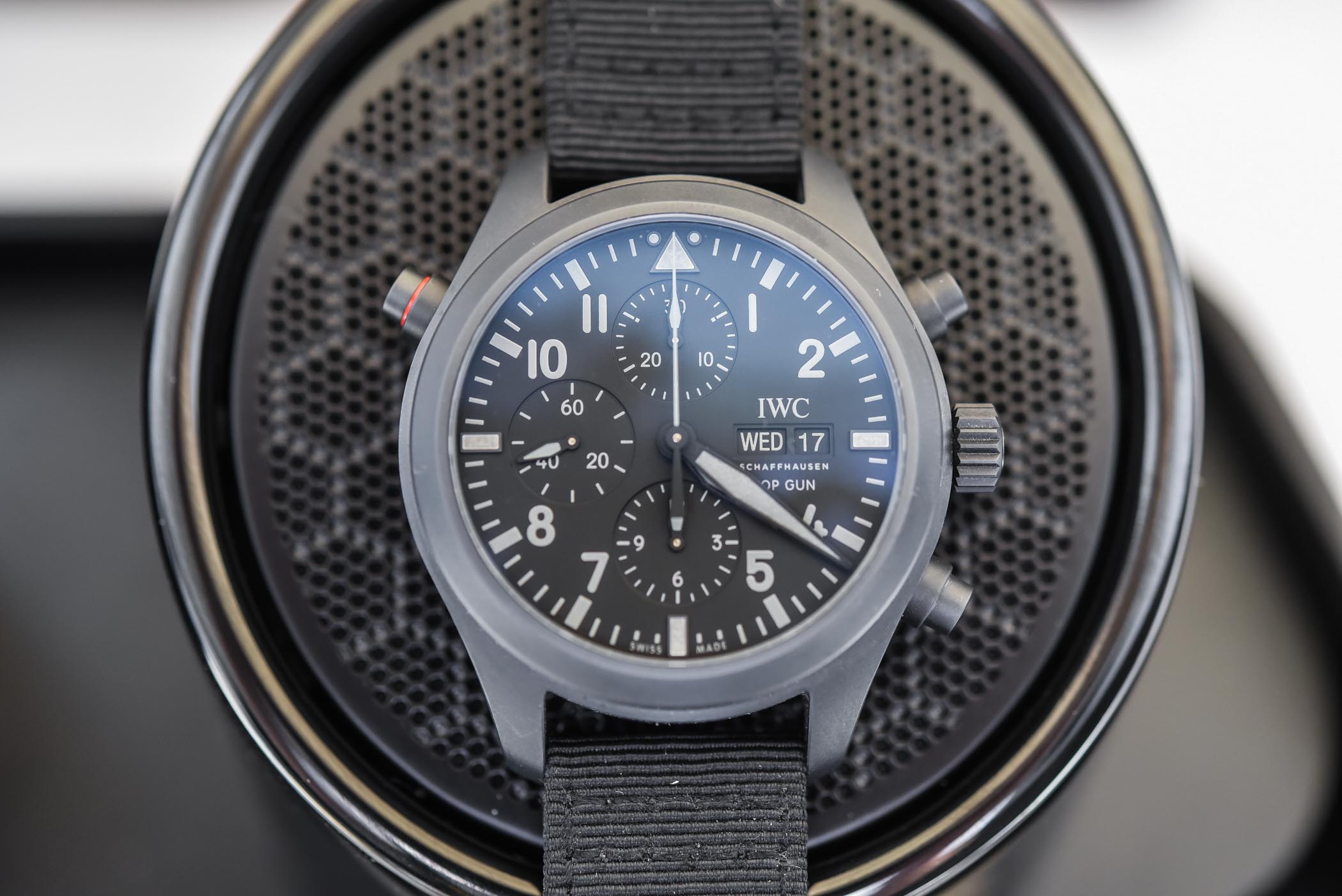
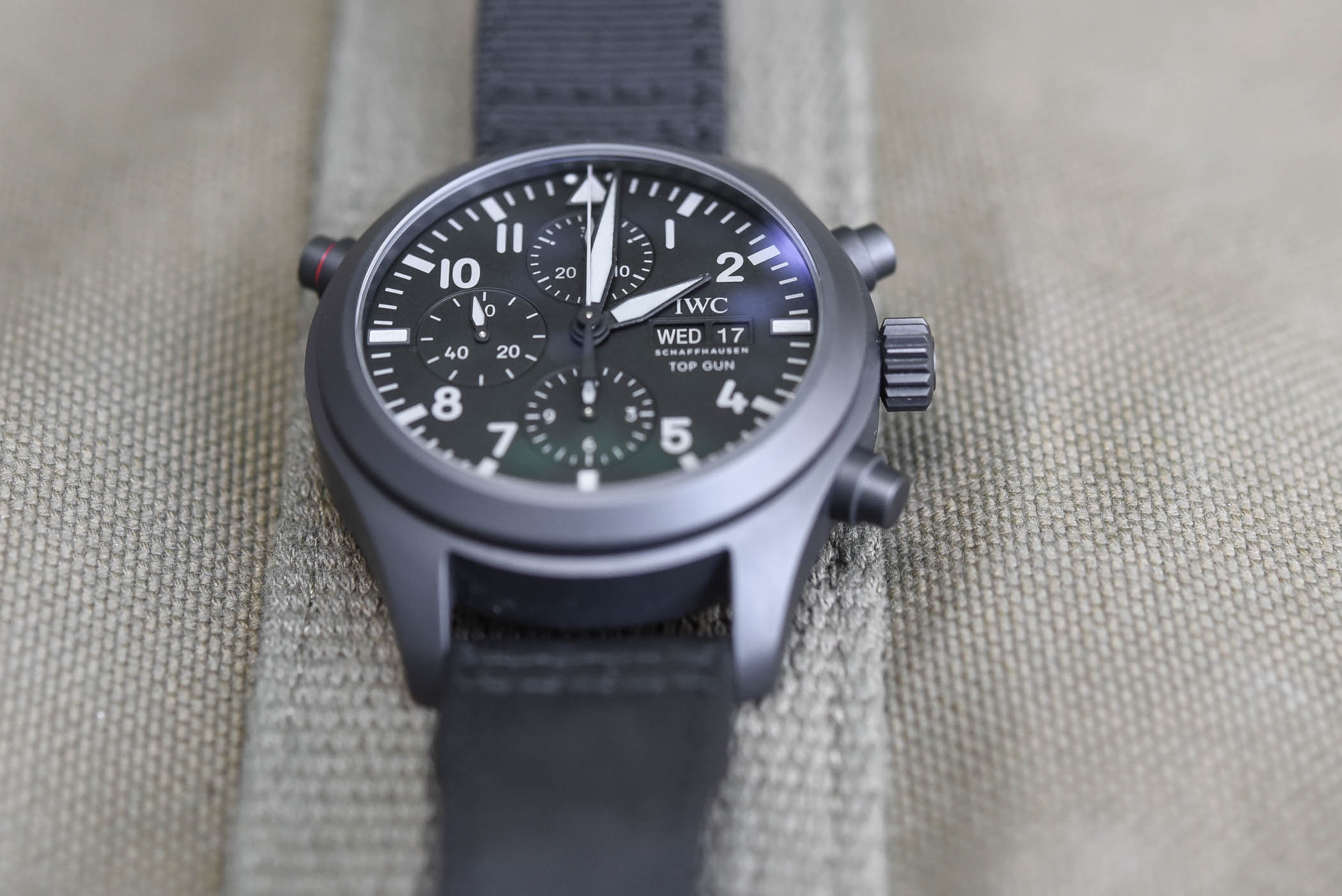
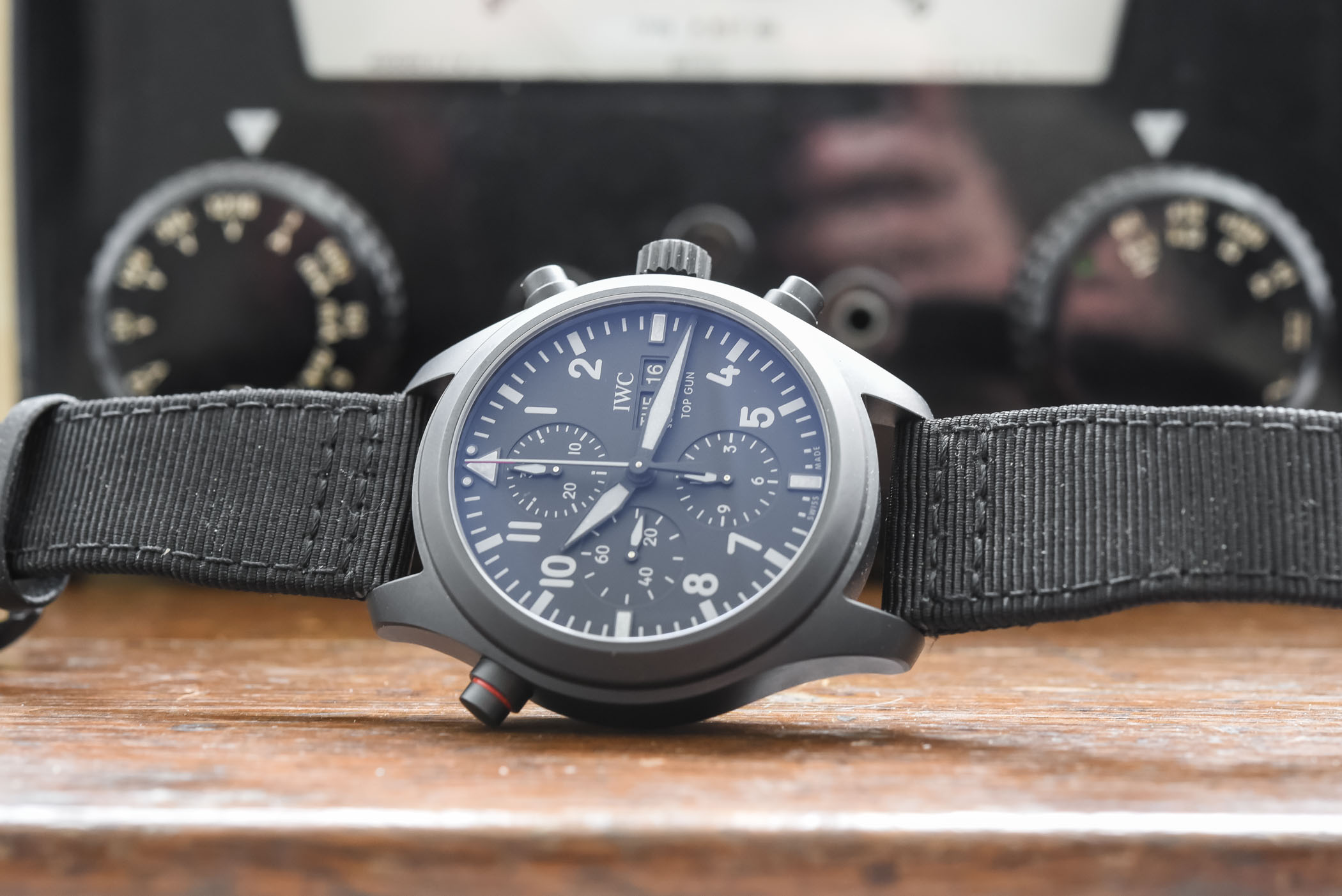
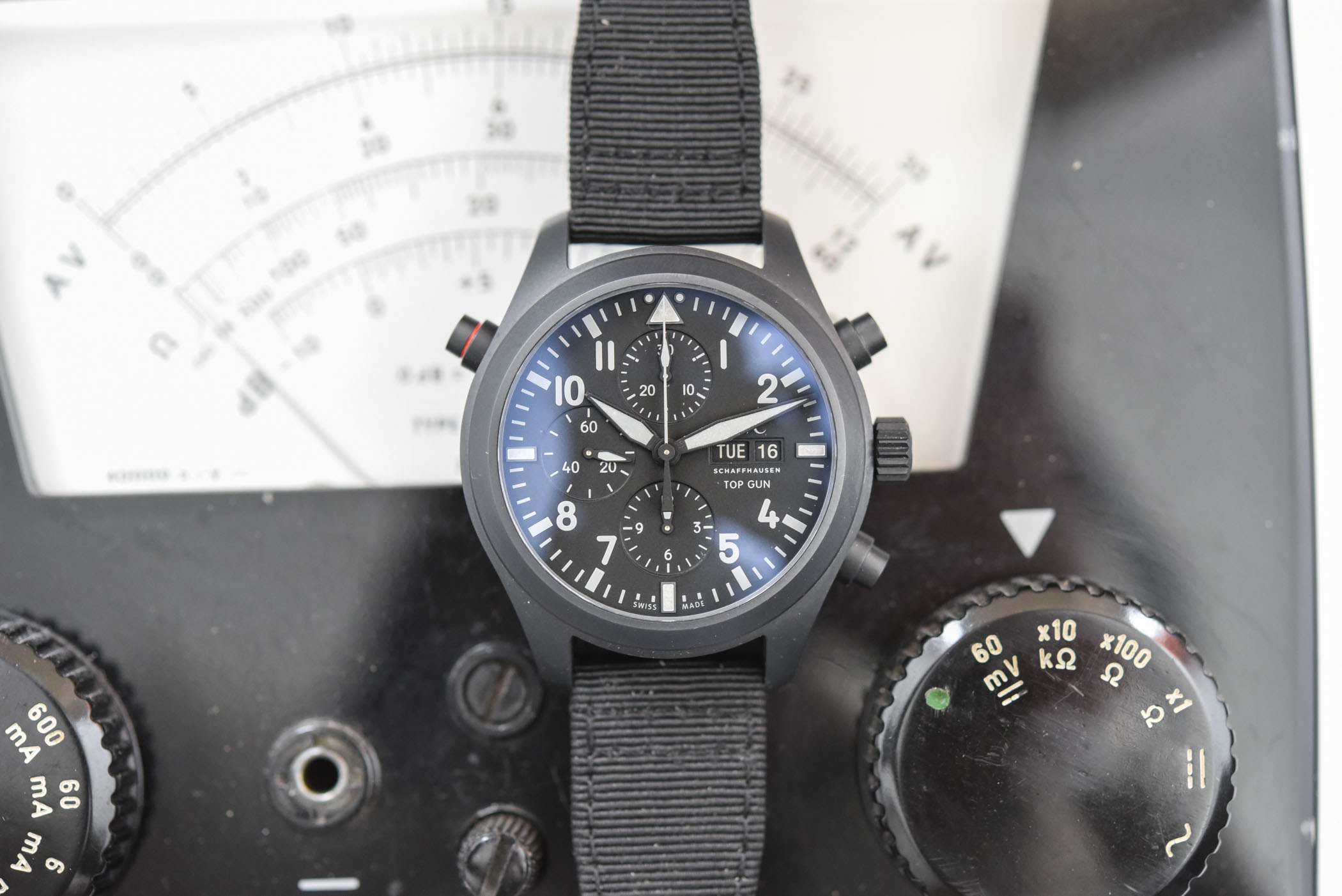
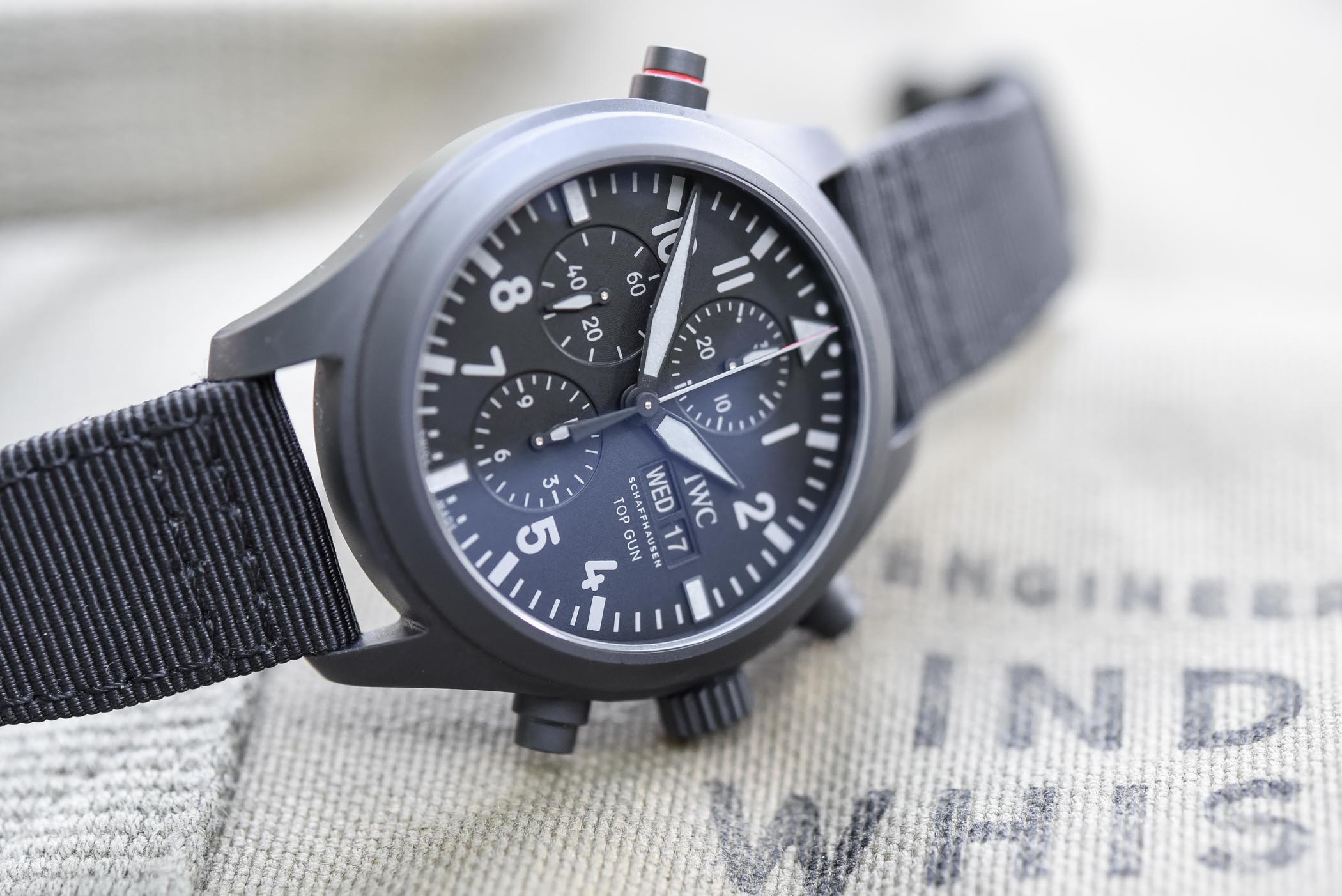
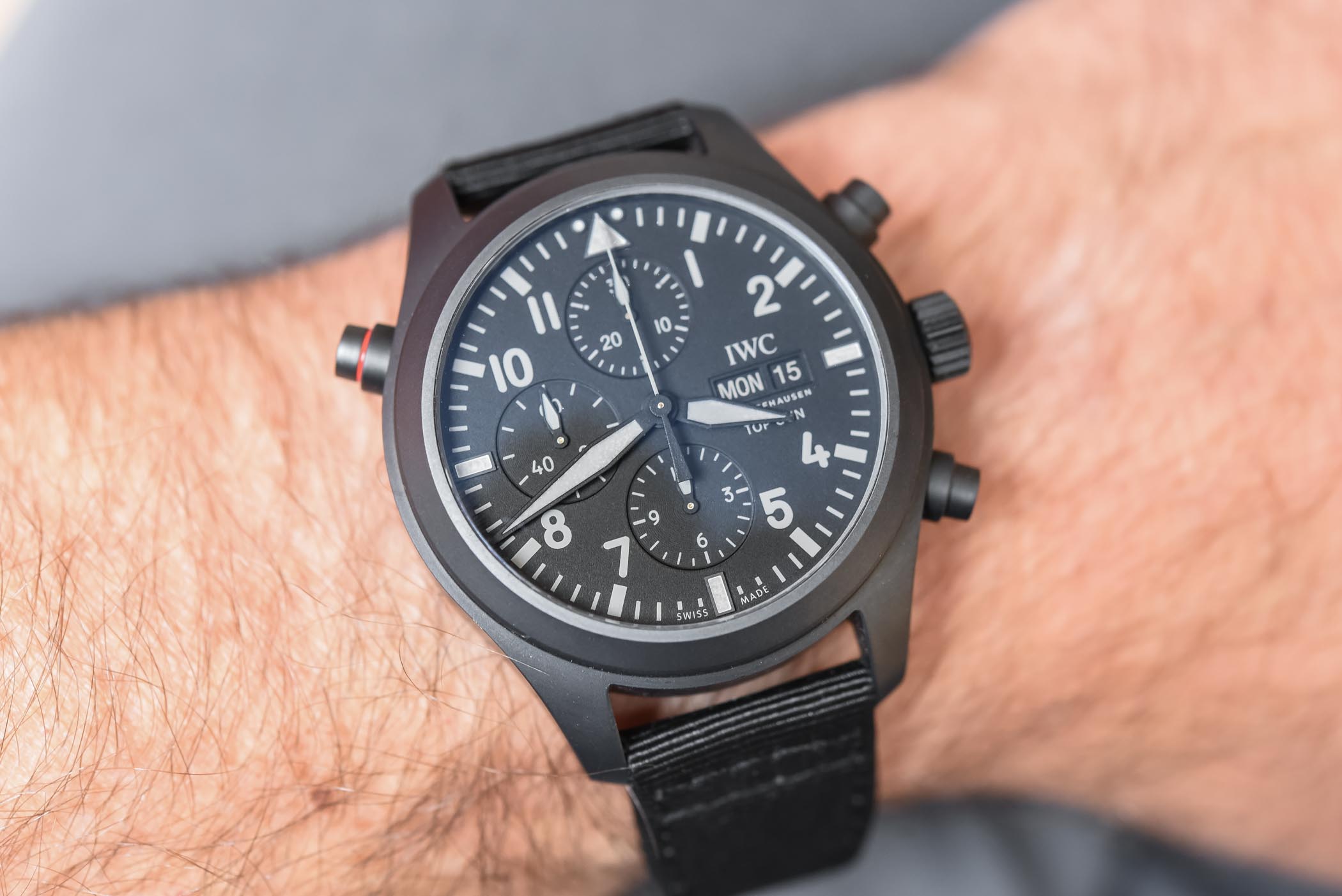
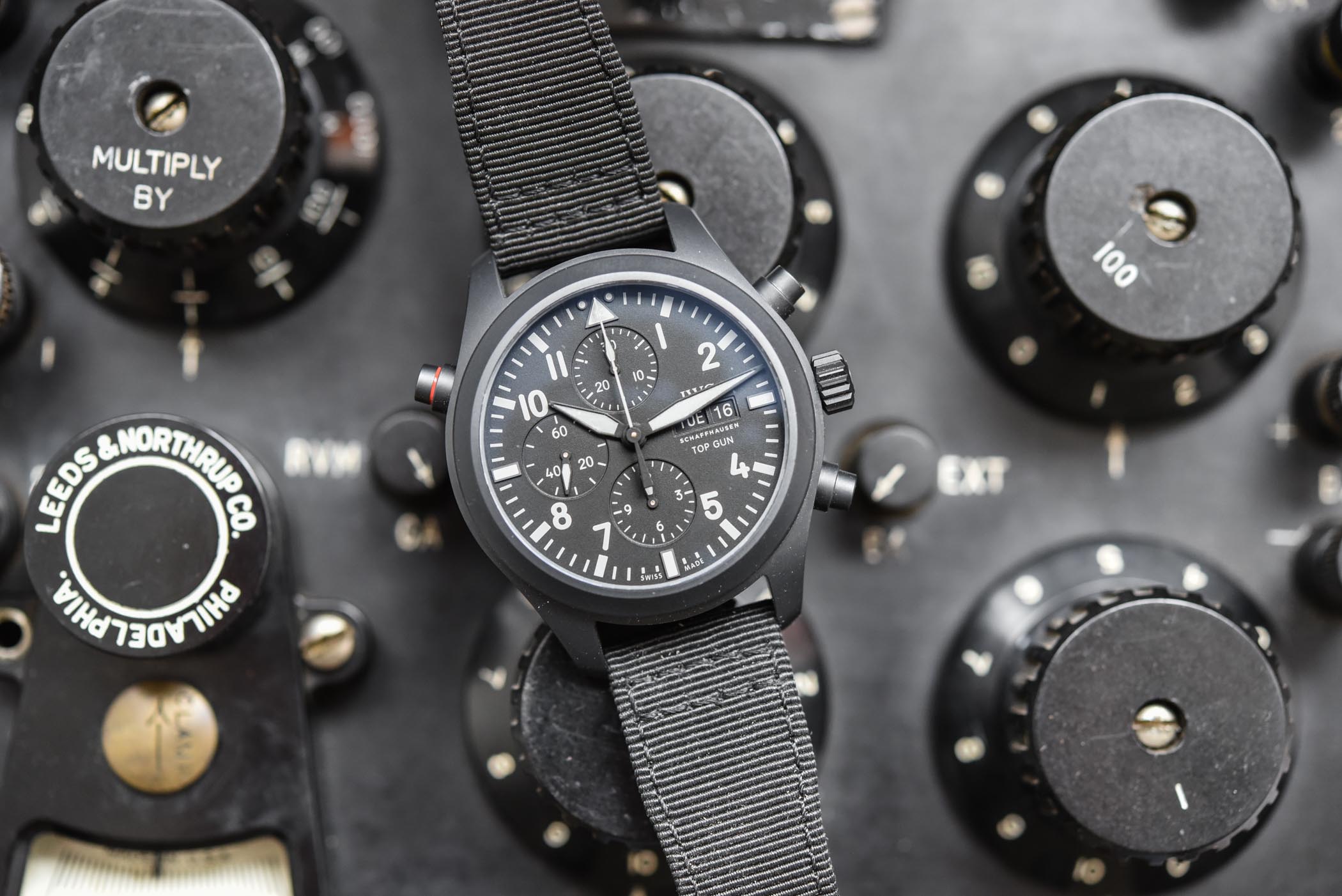
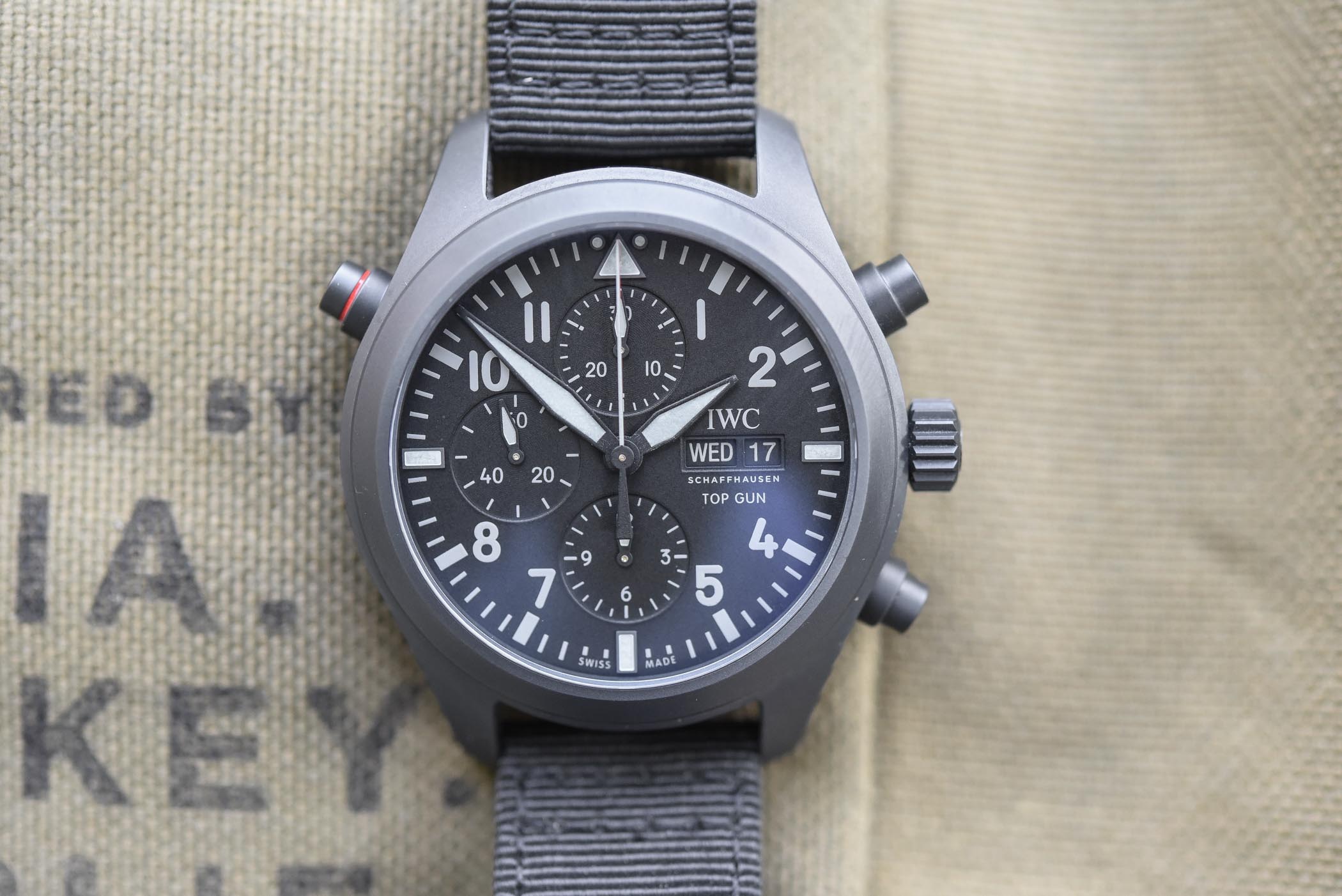
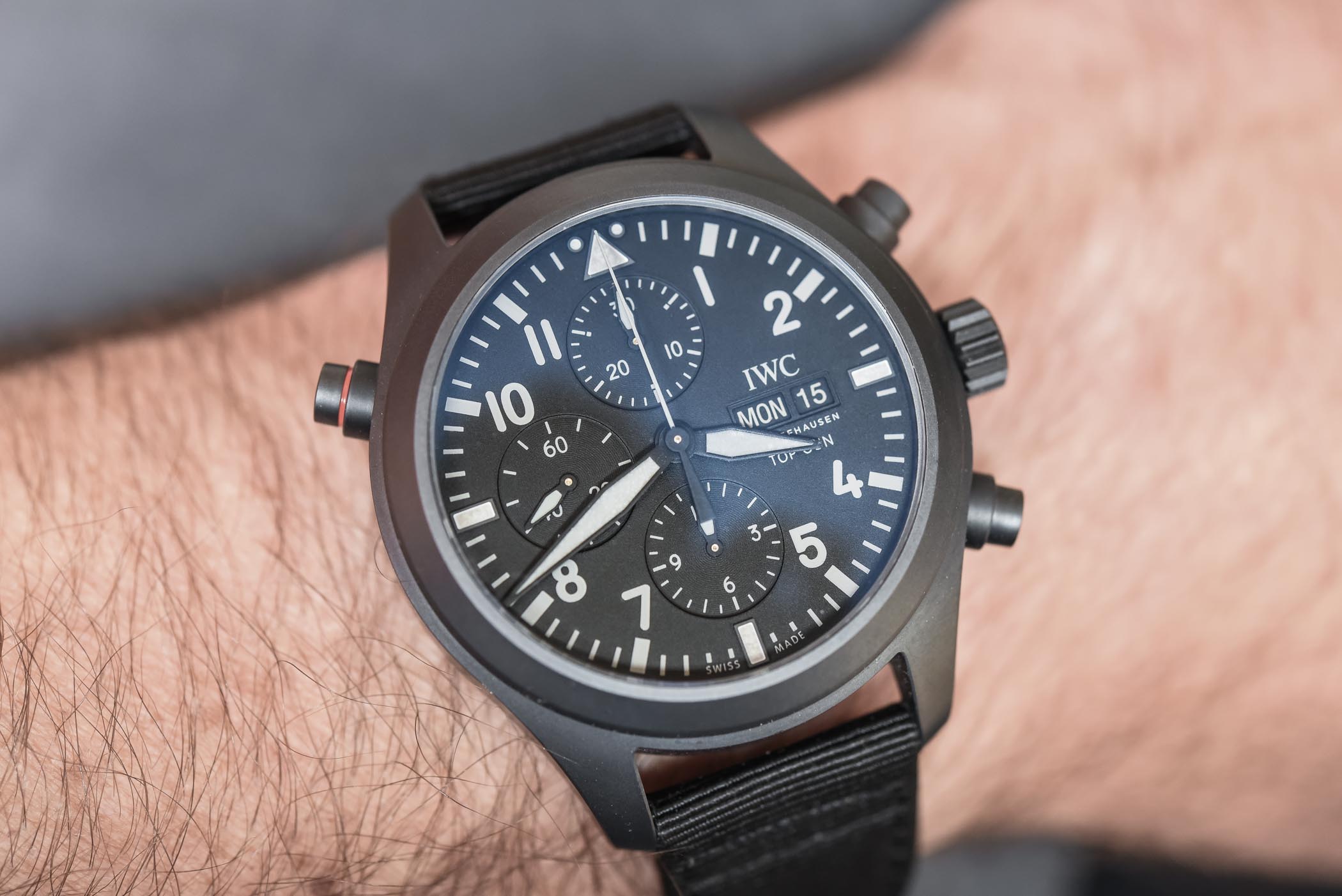

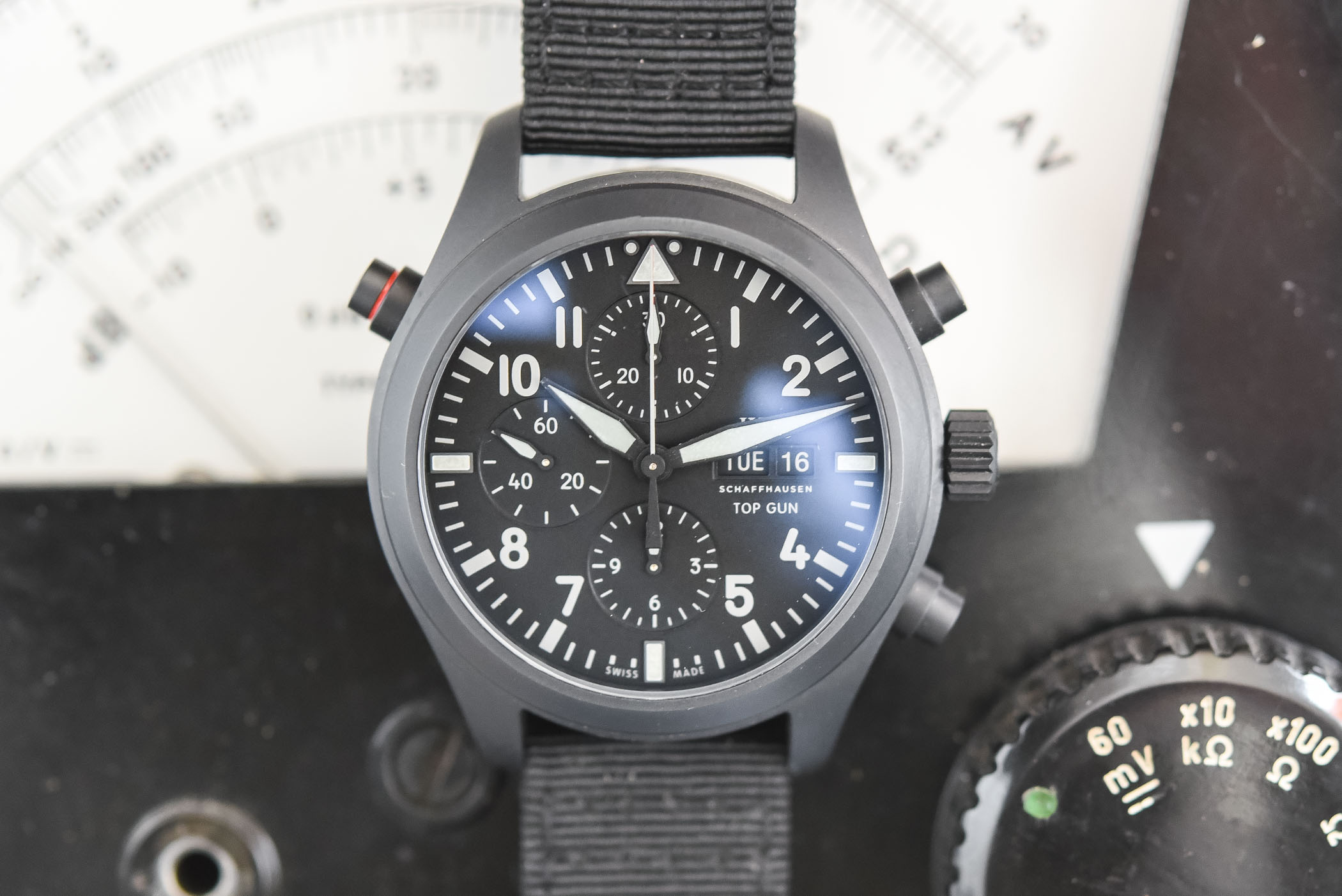
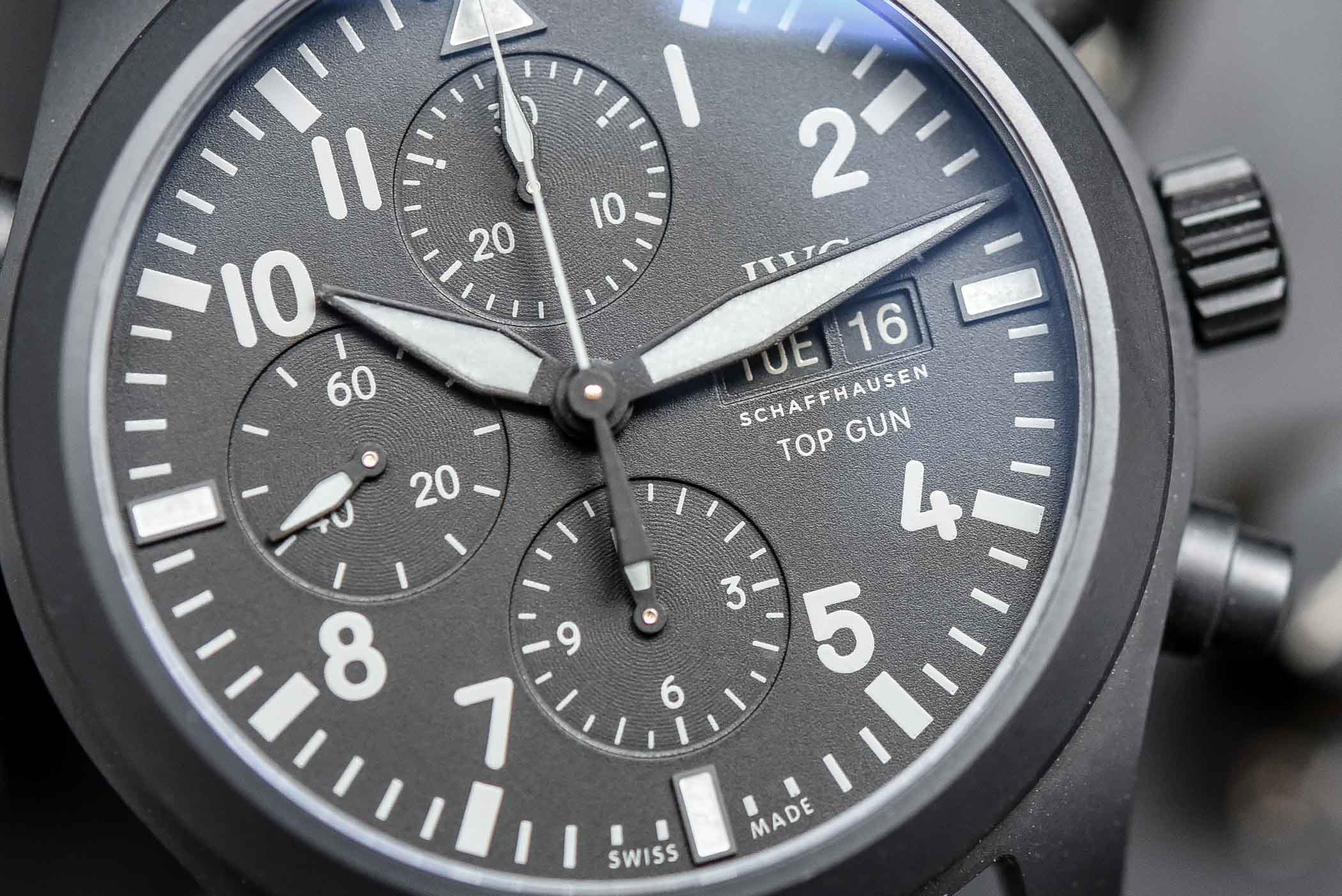
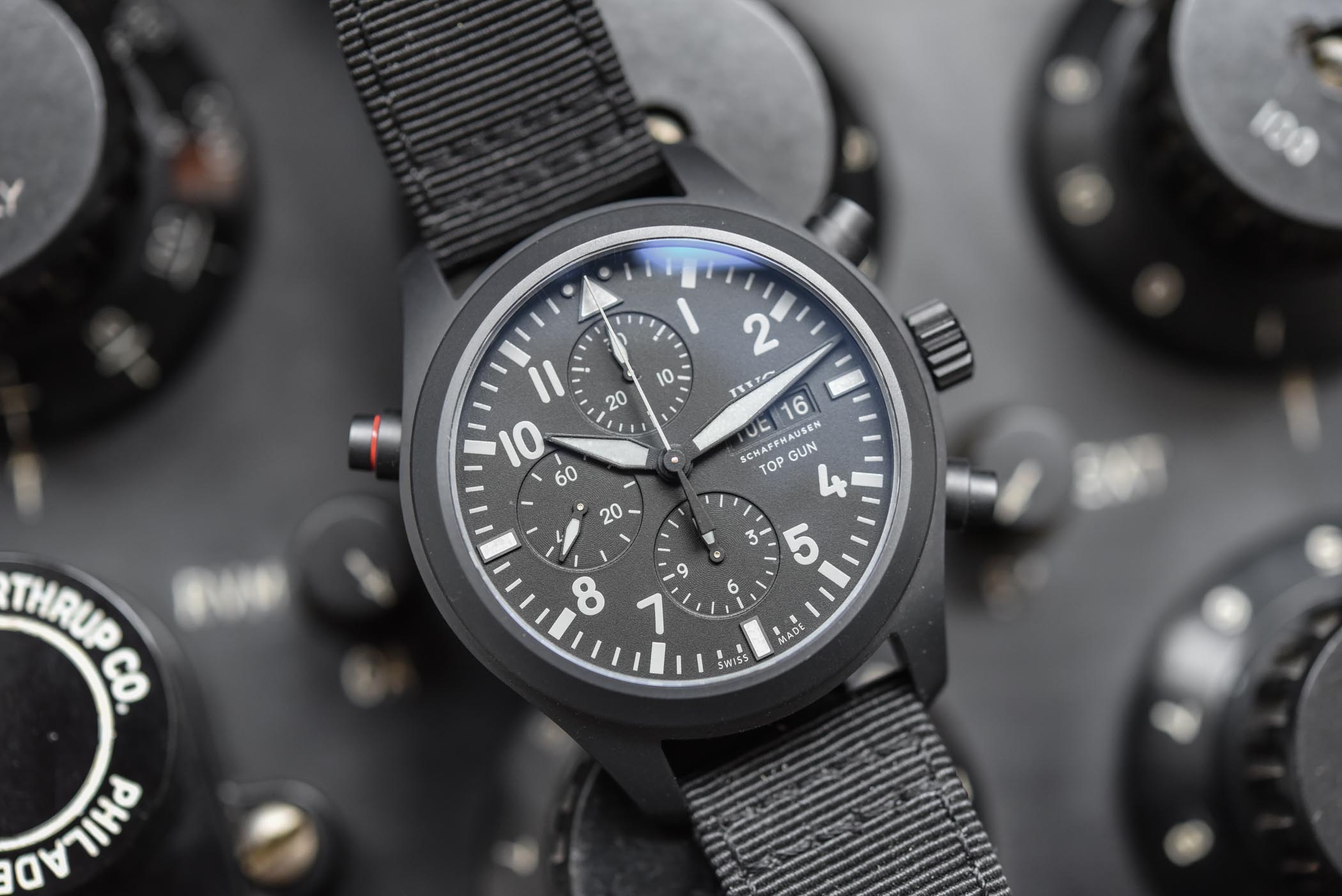




8 responses
I like the look but not the price,looks like my seiko 5 went to collage and now wants all the money.
Admittedly, this looks like a very cool watch. I just don’t see why I should be paying 14,5k for a watch whose movement is based on 30-year old technology. Ok, the ceramic case seems to be really nice, but IMO not worth it …
It’s an IWC therefore stupidly overpriced. I really think they’re core market is now Middle Managers Who Want To Look A Bit Dangerous.
Their!
I’m glad you mentioned Habring in the review, as the Doppel-Felix shows this thing up to the Nth degree. Half the price and twice as nice.
Looks great and I like the high tech materials. Very expensive, the thing that would put me off though is having “Top Gun” on the dial.
It’s unwearably huge at 44mm x 16.7mm.
I nearly spat my dinner out in surprise/disgust at the price, I mean for a IWC. Just naw